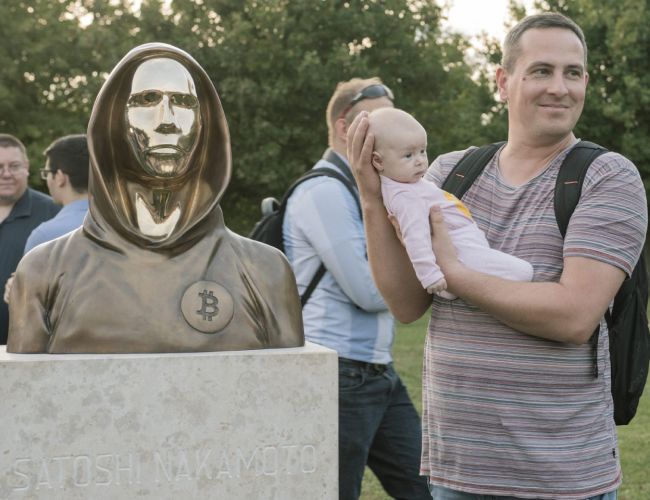Few tales capture the imagination quite like the enigma of Satoshi Nakamoto, the pseudonymous figure behind the creation of Bitcoin. This narrative, brimming with mystery and speculation, explores the various theories and known facts about the elusive founder, whose true identity remains shrouded in secrecy.
The Genesis of Bitcoin
At the core of Bitcoin’s inception lies a white paper attributed to Satoshi Nakamoto, a name that has since become synonymous with the digital currency revolution. However, the true authorship behind this moniker remains an enduring mystery, fueling endless speculation and investigation. Satoshi Nakamoto’s Bitcoin wallet, holding an estimated one million bitcoins, posits the creator as a billionaire, with a fortune valued at approximately $4.3 billion as of August 14, 2017. Yet, remarkably, only a fraction of this wealth, about 500 bitcoins, has been utilized.
In a nod to Nakamoto’s groundbreaking contribution, a UCLA finance professor nominated the mysterious figure for the Nobel Prize in Economic Sciences in 2015, highlighting the profound impact of Bitcoin on the financial world.
Theories Abound: The Identity of Satoshi Nakamoto
Speculation regarding Nakamoto’s identity ranges from individual geniuses to groups of tech titans. One theory suggests Satoshi was actually Hal Finney, an early Bitcoin adopter who passed away in 2014, potentially taking the secret of Nakamoto’s identity to the grave. Others propose that “Satoshi Nakamoto” could represent a collective of companies, including tech giants like Samsung and Toshiba, cleverly hidden within the pseudonym.
Digital Footprints and Communications
Satoshi Nakamoto’s preference for digital communication, avoiding direct contact, adds to the mystique. Notably, Nakamoto discouraged Wikileaks from accepting Bitcoin donations in the cryptocurrency’s infancy, highlighting the protective nature of its creator towards the nascent digital currency.
Final Communications and Theories
The last known message from Satoshi Nakamoto, urging Bitcoin developers to downplay the “mysterious founder” angle, was sent in April 2011. This, along with stylistic similarities in writings linked to American Nick Szabo and the debunked claim of Australian Craig Steven Wright, adds layers to the complex puzzle of Nakamoto’s identity. However, a recent court rulling stipulated that Wright was not Satoshi.
Legacy and Influence
A testament to Nakamoto’s lasting impact, the smallest unit of Bitcoin, one hundred millionth, is named a “Satoshi,” symbolizing the indelible mark left by Bitcoin’s creator on the cryptocurrency landscape. From mistaken identities, such as the case with Dorian Prentice Satoshi Nakamoto, to fabricated proofs of identity by Craig Steven Wright, the quest to unveil the real Satoshi Nakamoto has seen its share of missteps and controversies.
Amidst the swirl of speculation, some have even posited that Bitcoin is the brainchild of U.S. intelligence agencies, a theory that, while intriguing, remains part of the web of conjecture surrounding the cryptocurrency’s origin.
The Satoshi Hada Theory
A recent post on Reddit’s CryptoCurrency forum has reignited interest in the identity of Satoshi Nakamoto, proposing a novel perspective that implicates a trio of IBM researchers in the early development of blockchain technology, predating Bitcoin. This theory suggests that Satoshi Nakamoto may not be a single individual but rather a collective pseudonym for these researchers. The hypothesis stems from the identification of three names: Satoshi Hada, Toshiaki Tanaka, and Naohiko Uramoto, associated with early blockchain projects. A particular tweet mentioning these individuals alongside a Google search linking them to seminal work in cryptography has fueled speculation about their possible connection to Bitcoin.
Other Popular Beliefs
Contrary to popular belief, Satoshi Nakamoto is not necessarily a single individual. This pseudonym could represent one person or a collective of minds. Despite various theories, the true identity, or identities, behind this moniker remains an enduring mystery. While Nakamoto demonstrated profound knowledge in computer science and cryptography, it’s a myth that they single-handedly invented Bitcoin without any precursors. The development of Bitcoin was a collective effort, building upon prior research and contributions from the open-source community.
Another common belief is that Nakamoto could manipulate Bitcoin’s market price with their purported holdings. However, given Bitcoin’s decentralized nature and complex market dynamics, it’s highly unlikely any single entity’s actions could significantly impact its value.
Speculation abounds that Nakamoto might one day reveal their true identity. Yet, as years pass, such a revelation seems increasingly improbable. Nakamoto’s anonymity was a deliberate choice, emphasizing the technology’s decentralized ethos over personal fame.
Misconceptions about Satoshi Nakamoto are as vast as the curiosity surrounding them. By examining the facts, we can appreciate the innovation of Bitcoin while recognizing that the allure of Nakamoto’s identity may forever remain a part of its mystique. The focus should rightly stay on Bitcoin’s revolutionary impact on finance and beyond, rather than on the shadowy figure(s) behind its creation.
 cryptonews.net
cryptonews.net
